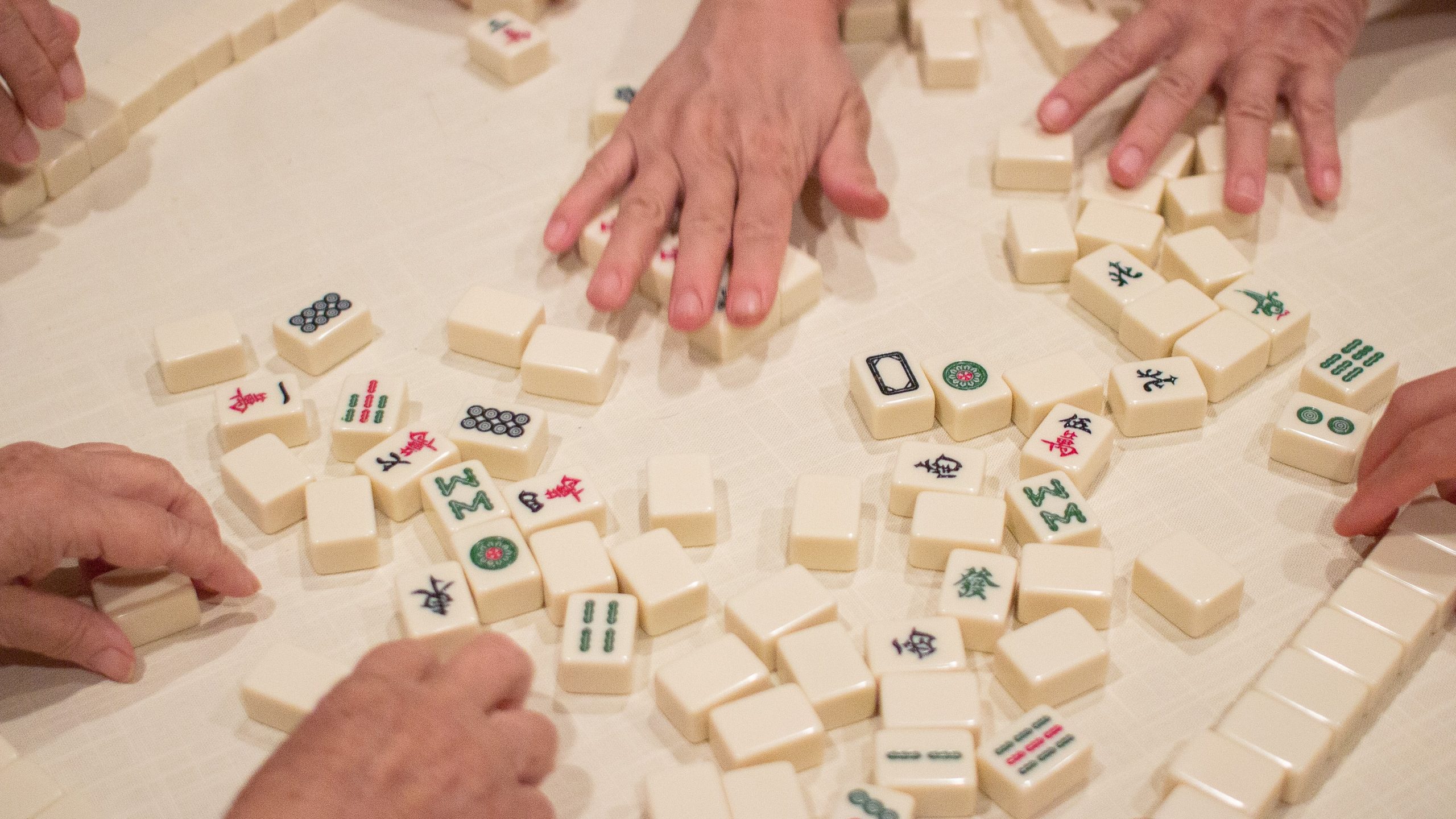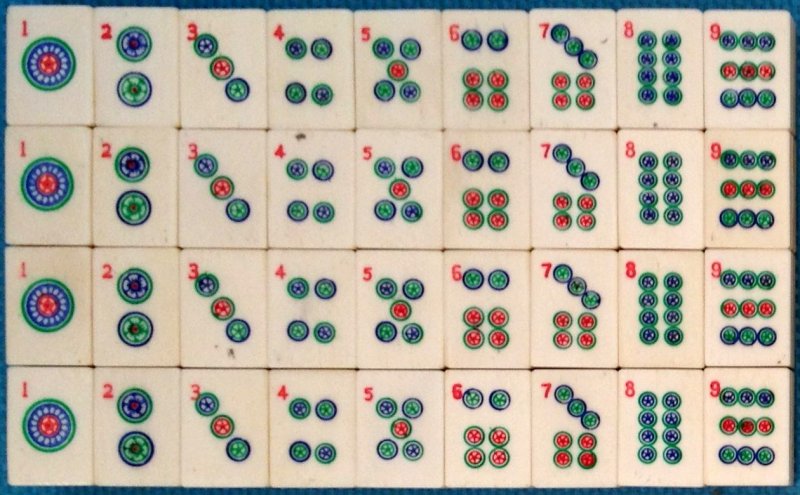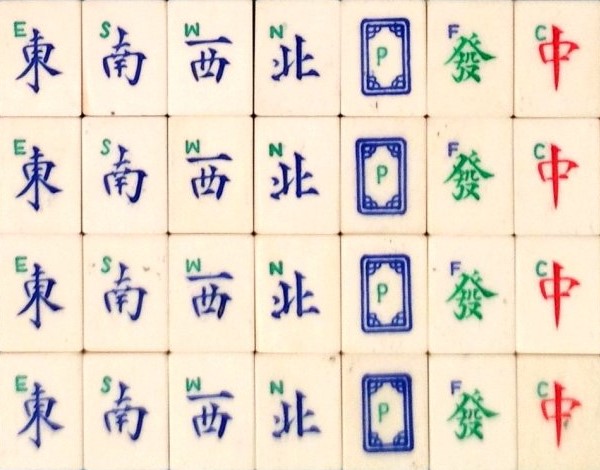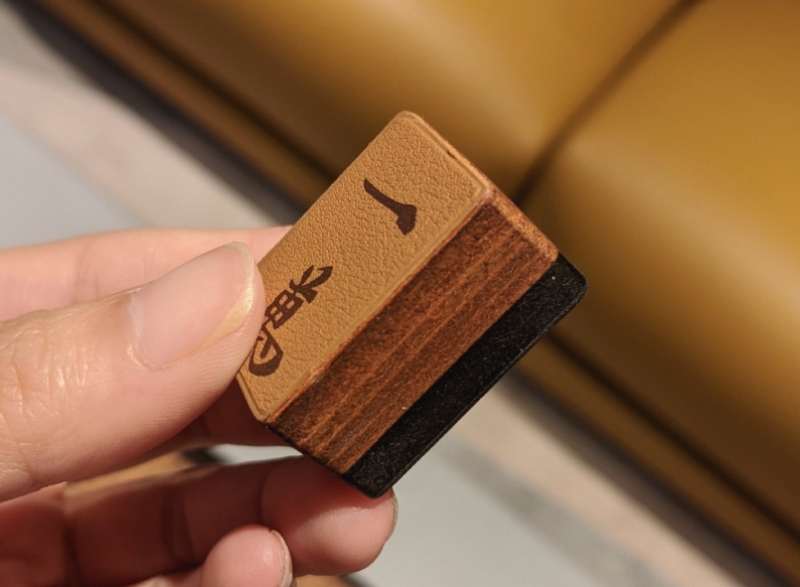A Quick Guide to Mahjong Tiles

The origin of Mahjong (麻將) dates back to early civilization and remains popular to this day. It’s a four-player game that is well-known throughout Asia and may be played as a casual game with family and friends or as a way to gamble.
One Mahjong set typically contains 144 tiles with four of each three suits, namely Bamboo (String), Stones (Wheels), and Characters (Numbers). Aside from the three main suits, each Mahjong set also has two kinds of honor suits, namely Winds (compass directions) and Dragons. Lastly, there are also optional suits, which are different kinds of flowers.
Here are the different kinds of Mahjong tiles:
Bamboo (String)

There are 36 tiles for Bamboo Sticks (sou-zu) and each has four tiles of the numbers, one to nine. One is usually in a symbol of a peacock or sparrow and people sometimes call this, “bird,” instead of “one stick.” Bamboo sticks represent the strings that ancient copper coins in sets of 100 or 1,000 were strung on to.
Stones (Wheels)

This suit is formed by the wheels (pin-zu) which may also be called balls or circles and contains 36 tiles of stones. The early Mahjong players depict the stones as coins or shields. Just like bamboo sticks, stones also have four of each piece that are numbered 1 to 9. The stone represents a 筒 (tóng), which is a coin with a square hole in the middle.
Characters (Numbers)

The tiles that show Chinese characters for figures 1 through 9 (man-zu) make up 36 out of the 144 tiles in the set. The character on top of each tile shows the number while the character under it is the Chinese symbol of wàn which means 10,000. This suit is also sometimes called the wàn suite. Before playing, it’s recommended to master at least the numbers 1-9 in Chinese first.
The Honor Suits: The Winds and The Dragons

The Four Winds contain 16 tiles and are inscribed with the Chinese characters for the four compass directions, representing the four winds: East, West, North, and South. The Three Dragons contain 12 tiles with 4 of each of the three variations: The Red, Green, and White Dragon. Like the Character suit, it may be best to familiarize one’s self with the wind direction in Chinese characters.
The Three Dragons have several meanings derived from the ancient imperial exam, archery, and the cardinal virtues of the famous Chinese philosopher Confucius. The red dragon 中 (zhōng, center) represents 紅中 (hóng zhōng), which means passing the imperial exam, a hit in archery, and the Confucian virtue of benevolence.
The green dragon 發 (fā, wealth) is part of the saying, 發財 (fā cái) which translates to “get rich,” but it also represents an archer releasing their draw and the Confucian virtue of sincerity. The white dragon 白 (bái, white) represents 白板 (bái ban, whiteboard), which means freedom from corruption, a miss in archery, or the Confucian virtue of filial piety. It’s also sometimes believed to symbolize the higher or spiritual order of beings.
The Flowers

Courtesy of Arlene (MahjongMentor)
There are a set of four flowers in each game and each of these flowers is associated with a specific wind direction: Plum is East, Orchid is South, Chrysanthemum is West, and Bamboo is North. Flowers are considered optional suits or wild cards (tiles) and are the counterpart of Joker cards in card games. They usually help a player gain extra points. These eight flower tiles represent the four seasons: winter, spring, summer, and fall, as well as the Confucian plants, bamboo, chrysanthemum, orchid, and plum.



